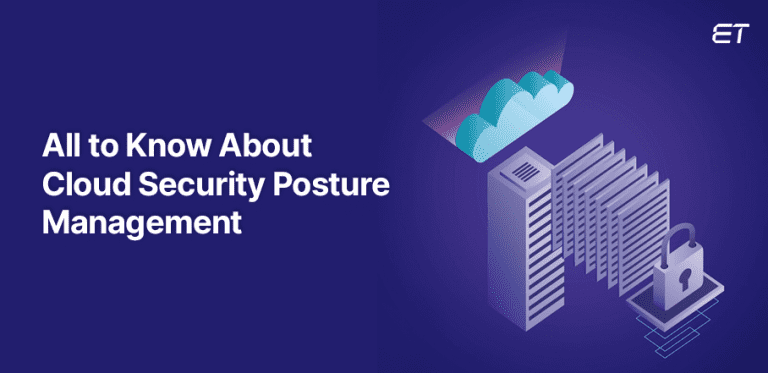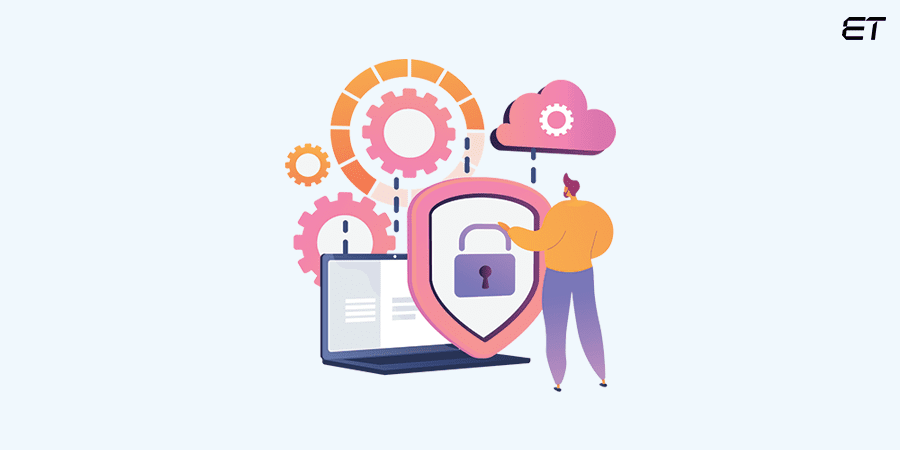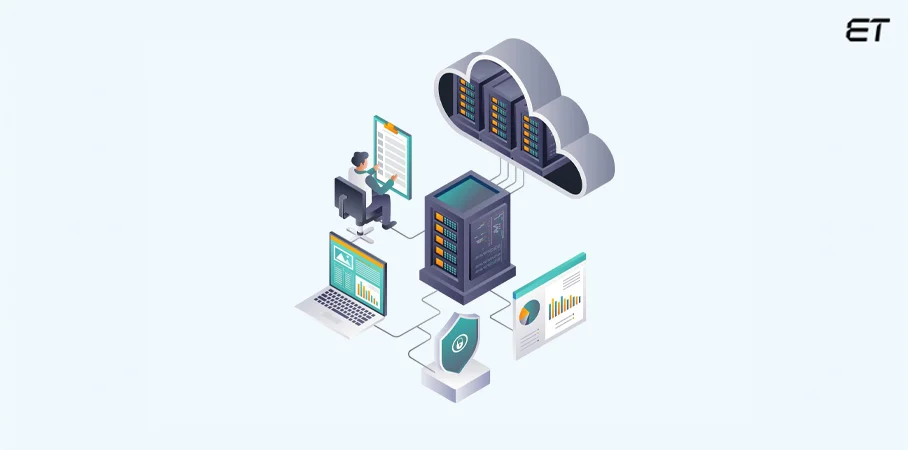
Cloud Security Posture Management: Concept and Importance
We’ve all been there. You check your email, and boom! This message appears – ‘Important information regarding your account.’ Soon, panic sets in. You think, ‘Could it be another data breach?’
Here’s an interesting incident – In 2023, attackers breached the personal information of 10 million JD Sports customers. Suddenly, those convenient online shopping sprees felt a lot less secure.’
This is the reality of our increasingly cloud-dependent world. While the cloud offers undeniable convenience and flexibility, it also introduces new security challenges.
That’s where Cloud Security Posture Management (CSPM) comes in, acting as a guardian for your valuable data stored in the cloud. Now that we’ve piqued your curiosity, scroll ahead and unravel this vital cybersecurity concept.
What is Cloud Security Posture Management?

You can think of cloud security posture management as a 24/7 security guard for your cloud environment. This technology constantly checks the weaknesses and threats of your cloud solution.
CSPM, or cloud security posture management, offers several key benefits as follows:
- Spotting Security Gaps: CSPM continuously scans your cloud infrastructure, investigative vulnerabilities, and misconfigurations before cyber attacks
- Ensuring Regulations: This technology acts as your guide, ensuring your cloud environment adheres to industry standards and internal security policies
- Saving Invaluable Time: CSPM automates many security tasks, freeing up your IT team’s valuable time and resources to focus on strategic initiatives
By implementing cloud security posture management, you can gain peace of mind by knowing that your cloud environment is constantly monitored and supervised.

Looking to speak directly with a POC who can suggest the best CSPM solution? Contact us now
Why Choose a Vendor with Strong Cloud Security Posture Management Solutions?
Let’s get straight to the point. You don’t want to waste time analyzing the technicalities of cloud security posture management.
In fact, all you want is to understand whether you should invest in partnering with a CSPM vendor. Well, in this section, we’ll explain why such a partner organization can prove lucrative to your business.
1. To Stay Ahead of the Curve

Cybersecurity threats constantly adapt and evolve constantly. So, a reactive security approach can hamper your output after an attack.
By proactively monitoring your cloud infrastructure and identifying vulnerabilities, your CSPM vendor equips you to address weaknesses before attackers can exploit them.
This proactive approach gives your business a significant edge over competitors who might rely on outdated security measures.
So, in simple words, here are the main benefits:
- Reduced Risk of Data Breaches
- Enhanced Brand Reputation
- Maintaining Business Continuity
Choosing the right cloud security posture management vendor allows you to stay ahead of your exact competitors, anticipate threats, and maintain a competitive edge in an ever-evolving digital landscape.
2. For Optimum Peace of Mind

‘Nobody wants restless nights, right?’
Data breaches can be risky for businesses, causing financial losses, brand reputational damage, and decreased customer trust. A strong cloud security posture management solution mitigates these risks and protects your valuable data.
With a reliable CSPM vendor by your side, you can experience the following benefits:
- Focus on Growth: Managing cloud security can be a complex and time-consuming task. CSPM automates many security processes, freeing up your team to focus on core business or non-technical initiatives that drive growth
- Ability to Concentrate on Non-technical Tasks: Knowing your cloud environment undergoes constant monitoring allows you to focus on strategic goals
- Build Trust with Stakeholders: A robust cloud security posture exhibits your commitment to data protection and fosters trust with all stakeholders
Choosing a cloud security posture management vendor allows you to operate confidently, knowing your data is safe and secure.

Need to analyze the best vendor for CSPM implementation? Then you need to create a solid request for proposal document. RFP for Software Development for all the insights.
3. To Meet the Ever-growing Customer Demands

How are modern customers?
In a word, ‘privacy-cautious.’ They don’t want companies to misuse their data. In fact, according to an article on CX Dive, 9 in 10 customers have privacy concerns that lead to their mistrust of companies. So, building trust with these tech-literate customers is a significant facet.
Here’s how a cloud security posture management vendor can help:
- By implementing a CSPM solution, you proactively address data security concerns. This activity translates to a robust cloud security posture, fostering trust and confidence in your customers
- A CSPM vendor can help ensure your cloud environment adheres to relevant regulations, giving your customers peace of mind that their data is safe
- When customers trust you with their data, they’re more likely to do business with you and remain loyal in the long run. A robust cloud security posture strengthens customer relationships and fosters brand loyalty
Overall, a robust cloud security posture management service demonstrates your commitment to data privacy and positions your business as a leader in responsible data management.
How Do Cloud Security Posture Management Tools Work?

Here’s a quick recap:
- You know cyber attacks are a major concern
- Cloud security posture management is one way to tackle this issue
- For proper implementation, a professional CSPM vendor is a good investment
Now, it’s time to understand the technical aspects of this technology. We can delve deep into explaining all the crucial elements of CSPM tools. However, the content is beyond the scope of one blog. So, instead, this section contains a quick glance at the general working principle of cloud security posture management.
CSPM tools employ a multi-pronged approach. The following four points explain each tactic in brief.
Continuous Monitoring
CSPM tools maintain a watchful eye over your cloud infrastructure. They continuously scan your cloud environment for the following abnormalities:
- Misconfigurations: CSPM tools identify vulnerabilities and alert you to potential security risks
- Unauthorized Access Attempts: These tools detect suspicious activity and potential breaches, allowing you to take immediate action
- Compliance Drift: They also monitor your cloud environment to ensure it adheres to evolving compliance standards
Overall, proper implementation of CSPM ensures a regular safeguarding system running in the background.
Prioritization of Risks
Cloud security posture management tools can identify issues in your cloud environment.
They intelligently categorize these flaws based on severity. Such systematic segregation allows you to prioritize the most critical risks and address them first, maximizing your security posture.

Also want a list of some handy cloud migration tools? Then click here now
Automated Remediation
One more interesting fact – CSPM tools can automate remediation actions for certain threats.
For example, these tools can patch vulnerabilities or restrict access when suspicious activity is detected. Such swift response helps minimize potential damage from cyberattacks.
Detailed Reporting and Alerts
CSPM tools provide comprehensive reports and real-time alerts, keeping you informed about the security posture of your cloud environment. This aspect allows you to stay on top of potential issues and make apt decisions to strengthen your cloud security.
How to Implement Cloud Security Posture Management?
Cloud Security Posture Management provides a robust shield for your digital kingdom.
But how can you translate this knowledge into action? In this section, we’ve explained some simple steps you can follow.
Define Your Security Goals

Start by identifying your most critical assets and data in the cloud.
- What are your biggest security concerns?
- Are there specific regulations you need to comply with?
Understanding your cybersecurity goals can help you choose the right CSPM solution and tailor its implementation for maximum effectiveness.
Choose Your CSPM Vendor

There are several CSPM vendors in the market. In fact, this segment can grow to USD 8.6 billion by 2027.
So, to ensure choosing the best vendor, consider the following points:
- Cloud Compatibility: The CSPM solution should integrate with your specific cloud platform (AWS, Azure, GCP, etc.)
- Security Features: It should have attributes like vulnerability scanning, compliance monitoring, and automated remediation
- Scalability and Cost: You should choose a solution that scales with your cloud environment’s growth and aligns with your budget
In addition, it’s always good to talk with your potential cloud security posture management vendor online or offline.

Want to save time researching potential options? Connect with us today
Implement and Configure

Once you’ve chosen your CSPM vendor, it’s time for deployment.
This stage involves the following aspects:
- Integration of the CSPM tool with your cloud environment
- Configuration of the tool based on your security policies and compliance requirements
- Permission for appropriate access to relevant personnel within your organization
In most cases, an experienced cloud security posture management vendor will help you with these steps.
Monitor and Improve Continuously

It’s crucial to understand that CSPM is an ongoing process.
So, as a business, you should perform the following steps after establishing a robust system:
- Review reports and alerts generated by the CSPM tool regularly
- Address identified security vulnerabilities and misconfigurations
- Refine your security policies and adjust the configuration as per necessity
- Conduct periodic security assessments to ensure the effectiveness of your CSPM implementation
By following these simple technical steps, you can implement CSPM and ensure top-notch safety standards in your digital cloud environment.
In a Nutshell
It’s true – cloud technology offers unparalleled convenience and scalability. However, it also introduces new security challenges. Data breaches can be devastating and hamper customer trust.
So, cloud security posture management can be a good cyber security solution. This technology constantly monitors your cloud environment and addresses security threats.
Overall, it’s vital to remember that cloud security posture management is ongoing. You can build a secure cloud foundation for your business with the right expertise.
If you’re ready to take the first step towards a more secure cloud environment, we have the right team for the job. Our specialists can help assess your security posture and identify the right CSPM solution for your needs. So, contact us today for a free consultation and unlock the full potential of a secure cloud!
Frequently Asked Questions
1. What are the most significant benefits of using a CSPM tool?
CSPM tools ensure proactive threat detection and remediation, simplified compliance management, and improved operational efficiency. So, you can consistently implement such handy tools or develop a custom solution from reliable IT vendors.
2. How does CSPM differ from cloud access security broker solutions?
CSPM focuses on securing your cloud infrastructure by identifying vulnerabilities, misconfigurations, and compliance gaps. On the other hand, cloud access security broker solutions control access to cloud resources. The latter focuses on user authentication, authorization, and data security within the cloud environment.





